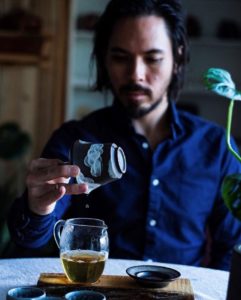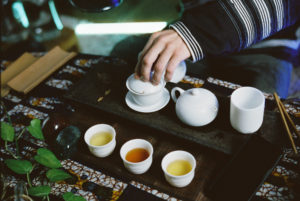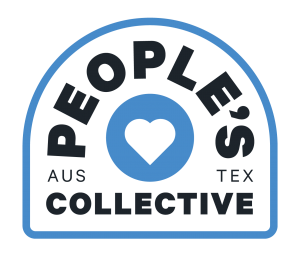Las recientes nevadas y temperaturas bajo cero en todo Texas han dificultado la vida de muchas personas. A continuación encontrará recursos de ayuda para cortes de agua y los demás servicios, lugares de distribución de agua, problemas de suministro de energía y electricidad, servicios de reparación de emergencia, servicios de transporte; servicios de basura, compostaje y reciclaje; refugios para el clima frío, asistencia de la Agencia Federal para el Manejo de Emergencias (FEMA, por sus siglas en inglés) y del Departamento de Vivienda y Desarrollo Urbano (HUD, por sus siglas en inglés) así como también ayuda de organizaciones locales sin fines de lucro.
-
USTED, COMO UN RESIDENTE DEL CONDADO DE AUSTIN Y TRAVIS, NO PUEDE SER DESALOJADO POR no pagar EL ALQUILER y esto SE EXTIENDE HASTA EL 1 DE ABRIL DE 2021.
-
HAGA CLIC AQUÍ PARA OBTENER MÁS INFORMACIÓN SOBRE LA CIUDAD DE AUSTIN Y LAS ZONAS ALREDEDORES.
-
Suministro de ENERGÍA Y ELECTRICIDAD
La Comisión de Servicios Públicos ha ordenado que sus servicios públicos (electricidad, gas, etc.) no sean desconectados en este momento. Esto sólo es válido para los clientes de Oncor, AEP, Centerpoint y TNMP.
Austin Energy está reportando que el servicio ha sido restaurado en un 99.99%. Para obtener la información más actualizada, vaya a:
Si en su área hay un distribuidor de servicios públicos diferente a Austin Energy, póngase en contacto con dicho distribuidor.
Distribuidores de electricidad
- Bluebonnet Electric Co-op: 800.842.7708 o bluebonnetelectric.coop/
- Oncor Electric: 888.313.4747 o oncor.com/SitePages/Home.aspx
- Pedernales Electric Co-op: 888.554.4732 o pec.coop/
Distribuidores de gas natural
- ATMOS Energy: 888.286.6700 o http://atmosenergy.com/
- CenterPoint Energy: 800-752-8036 o centerpointenergy.com/
- Servicio de Gas Natural SiEnergy: 888.468.7007 o sienergy.com/
- Servicio de Gas de Texas: 800.700.2443 o texasgasservice.com/
-
AYUDA DE REPARACIÓN DE TORMENTA DESDE LA CIUDAD DE AUSTIN
La ciudad de Austin tiene un sitio web para apoyar a los residentes locales y dueños de negocios cuyas propiedades resultaron dañadas por la reciente tormenta de invierno. Visite austintexas.gov/atxrepairs para encontrar información sobre plomeros, electricistas y otros contratistas; solicitudes de servicio y cumplimiento de códigos; el proceso de permisos de emergencia de la Ciudad; asistencia financiera para propietarios de viviendas; y programas de asistencia federal y local.
-
REPARACIONES DE EMERGENCIA EN SU VIVIENDA O NEGOCIO
Para obtener información sobre reparaciones de emergencia en su vivienda o negocio y obtener permisos, visite el sitio de Reparaciones de Emergencia de Austin o llame al 512.974.1500. Esta línea telefónica de atención exclusiva estará abierta durante el horario de oficina a partir del lunes 22 de febrero de 2021. Los residentes pueden comenzar a hacer reparaciones en sus viviendas tan pronto como puedan, y deben ponerse en contacto con el Departamento de Servicios de Desarrollo dentro de un día hábil para adquirir un permiso si lo necesitan.
-
LOS EQUIPOS DE VOLUNTARIOS ESTÁN AYUDANDO A LAS PERSONAS A LIMPIAR SUS VIVIENDAS Y A REMOVER LOS ESCOMBROS.
Por favor, póngase en contacto con:
-
CORTES DE AGUA Y SERVICIOS
El aviso de hervir el agua en toda la ciudad ha sido cancelado para los clientes de Austin Water. Los detalles se pueden encontrar aquí: Aviso de hervir el agua y preguntas frecuentes
Si las tuberías de su vivienda o negocio se han reventado, detenga el derroche de agua cerrando la válvula de corte del propietario. Si no puede localizar la válvula de corte del propietario o si no funciona, llame a Austin Water al 512-972-1000 para que le ayuden a cortar el agua. Austin Water sigue disponible para contestar llamadas relacionadas con el servicio al cliente, pero las líneas pueden encontrarse ocupadas a causa de la alta demanda. El formulario en línea es la forma más fácil de obtener información.
-
Lugares DE DISTRIBUCIÓN DE AGUA
Visite el sitio web de Austin para obtener información sobre dónde recoger agua.
-
SERVICIO DE TRANSPORTE HACIA LOS LUGARES DE DISTRIBUCIÓN DE AGUA
CapMetro proporcionará un servicio de transporte a los lugares de distribución de agua en el Onion Creek Soccer Complex, ACC Pinnacle, Roy G. Guerrero Park y Walnut Creek Park. Los clientes pueden acceder al servicio de transporte en las paradas de autobús más cercanas a cada lugar de distribución de agua:
– Una parada de autobús provisoria en William Cannon para acceder al Onion Creek Soccer Complex (con servicio de la ruta 333)
– Oak Hill Plaza para acceder a ACC Pinnacle (con servicio de las rutas 315 y 333)
– ACC Riverside Transit Center para acceder a Roy G. Guerrero Park (con servicio de las rutas 217, 271, 310, 311 y 350)
– Parada de autobús N Lamar/Walnut Creek para acceder al parque Walnut Creek (con servicio de la ruta 1)
El servicio de transporte estará disponible en cada uno de estos lugares hasta que se agote el agua.
-
ACTUALIZACIÓN DE LA HERRAMIENTA DE EVALUACIÓN DEL ESTADO DE TEXAS (ISTAT)
El estado de Texas tiene un centro de llamadas para ayudar a aquellos que tienen acceso limitado a Internet o ningún acceso a Internet, a completar la Herramienta de evaluación del estado de Texas (iSTAT). Los tejanos pueden llamar al 844-844-3089 entre las 8:00 a. M. Y las 8:00 p. M. Los siete días de la semana para enviar su información de daños por desastre.
Todas las rutas de CapMetro operarán con sus horarios regulares el lunes 22 de febrero.
Las tarifas gratuitas se extenderán hasta el domingo 28 de febrero en un esfuerzo por proporcionar a todos el acceso a las personas, los lugares y los recursos que necesitan en este momento crítico.
-
SERVICIOS DE RECOLECCIÓN DE RESIDUOS, COMPOSTAJE Y RECICLAJE
Después de suspender el servicio de recolección en la acera debido al mal tiempo y las condiciones inseguras de las carreteras, Austin Resource Recovery reanudará el servicio el lunes 22 de febrero. Para obtener las últimas actualizaciones sobre cuándo se reanudarán los servicios, visite el sitio web de Austin Resource Recovery o descargue la aplicación Recycle ATX para recibir notificaciones sobre su horario de recolección en la acera.
-
Asistencia de la agencia FEDERAL PARA EL MANEJO DE EMERGENCIAS (FEMA)
FEMA ha anunciado que la ayuda federal de emergencia está disponible para los texanos afectados por la tormenta invernal a partir del 11 de febrero de 2021. La fecha límite para que cualquier persona solicite asistencia para la recuperación de este desastre es el 20 de abril de 2021. Para solicitar asistencia en caso de desastre en la vivienda y en el negocio, vaya a DisasterAssistance.gov o llame a FEMA al (800) 621-3362. En la primera página del sitio web de FEMA, haga clic en “Aplicar en línea” para empezar.
-
HUD (ASISTENCIA DE VIVIENDA)
El Departamento de Vivienda y Desarrollo Urbano de los Estados Unidos (HUD) anunció el lunes que proporcionará asistencia federal para catástrofes a los propietarios y compradores de viviendas en las zonas afectadas por las fuertes tormentas invernales. Los condados de Texas que están bajo la declaración de catástrofe grave del presidente Joe Biden podrán obtener ayuda para la ejecución hipotecaria y otros tipos de asistencia del HUD:
Agencias de consejería: las agencias de consejería de vivienda aprobadas por HUD tienen consejeros disponibles para ayudar a los afectados por las tormentas.
Ayuda para la ejecución hipotecaria: la moratoria automática de 90 días de HUD sobre las ejecuciones hipotecarias de hipotecas de vivienda aseguradas por la Administración Federal de Vivienda comenzó para los condados designados de Texas en la fecha de la declaración. Se insta a los prestatarios que no pueden hacer pagos hipotecarios a llamar a su administrador de préstamos.
Seguro hipotecario: HUD es capaz de proporcionar un seguro FHA a las víctimas de desastres cuyas casas fueron destruidas o dañadas hasta el punto de que la reconstrucción o sustitución es necesaria. Para aquellos que se enfrentan a la reconstrucción o la compra de otra vivienda, el programa permite a los prestatarios que cumplen los requisitos obtener una financiación del 100%, incluyendo los gastos de cierre.
Seguro tanto para hipotecas como para restauración de viviendas: uno de los programas de préstamos del HUD que permite a quienes han perdido su vivienda a financiar la compra o realizar una refinanciación de una vivienda junto con su reparación a través de una hipoteca única. Los propietarios de viviendas dañadas podrán financiar la reconstrucción de su vivienda unifamiliar.
Poner a disposición información sobre los proveedores de vivienda: HUD compartirá detalles con FEMA y el estado sobre los proveedores de vivienda que pueden tener unidades disponibles en las áreas afectadas.
-
ASISTENCIA DEL PROGRAMA MEDICO LEGAL DE PEOPLE’S (MLP)
Los pacientes de People’s pueden solicitar asistencia legal al Programa Médico Legal (MPL, por sus siglas en inglés). El MLP puede ayudar con:
- Desalojo
- Desconexión de los servicios públicos si el distribuidor es Oncor, American Electric Power (AEP), Centerpoint o TNMP
- Negación de las prestaciones de desempleo
- Negación de SNAP
- Negación de FEMA
-
NUEVO PLAZO PARA LA DECLARACIÓN DE IMPUESTOS
El Servicio de Impuestos Internos (IRS, por sus siglas en inglés) ha ampliado el plazo para la declaración de impuestos hasta el 15 de junio de 2021. Puede encontrar más información aquí.
 With Gratitude,
With Gratitude,![]()





